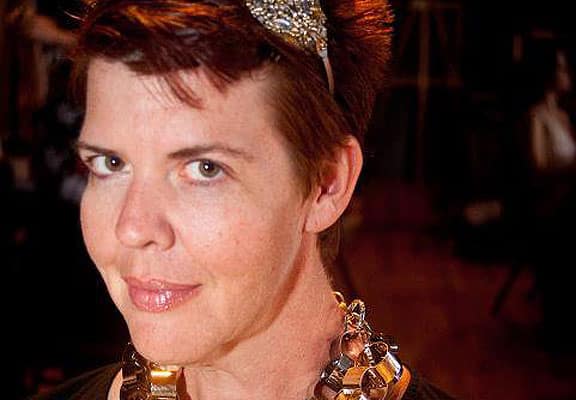

(WOMENSENEWS)–235 pounds: I was 29 years old and I decided that I wanted to be an actor. Interestingly, I chose a profession that is hyper-focused on how one looks. Very rarely does one hear “Can she play the part?” More often than not, one will hear “Does she look the part?”
I was still struggling with my body image and my relationship with food, but I knew I was good at acting and there was a niche for “fat” actresses. Many thin actresses won’t gain weight for a stage role–unless there is the possibility of a Tony nomination. I was already fat and someone has to play the fat roles. Plus, if I started losing or gaining weight quickly I could always blame it on my “character.” Interestingly enough, during my time at college I was cast as Lilith–a character who struggles with an eating disorder. I lost 20 pounds before the show opened by eating only salads and drinking diet soda, grapefruit juice and water. Art imitating life; life imitating art.
251 pounds: Then I auditioned for the musical, “Gypsy.” It was a large cattle-call audition and, to my surprise, I was hired by a company and cast as one of the strippers in the show–Mazeppa. In all the other productions I had been involved with, my body had been covered from head to toe. This show was different; I could hide behind my character, but ultimately, I was going to have to show “my” body–my fat and flabby body. Mazeppa’s costume didn’t leave much to the imagination–a black and brown brassiere, a short black and brown skirt, tights, a headpiece and dance shoes.
I was embarrassed each time I went in for a costume fitting. I was the only fat person in the cast. My fellow strippers–Electra and Tessie–were skinny actresses. Regardless of my size, each time I went in for fitting, my body wasn’t critiqued. In fact, time after time, I was told how “great” I looked in my costume.
Unavoidable Mirrors
The rehearsal period for “Gypsy” lasted three weeks. I could not avoid the mirrors. I couldn’t escape the shape of my breasts, my ass and my hips. I couldn’t escape the ways in which my hips swayed side to side. I couldn’t escape the ways in which I would roll my shoulders into a mean shimmy. I couldn’t escape the ways in which I would shake my ass. I also couldn’t escape the ways others viewed my body. None of my fellow cast mates laughed at my body as I performed in rehearsal. My director told me that I looked “sexy and salacious” as I was dancing and singing. At the time, I had no idea of what “salacious” meant. It wasn’t until I had the opportunity to look it up in the dictionary that I knew salacious meant “mouthwatering.”
I was suspicious of my costumer, my fellow cast mates and my director. But, I could not be suspicious of paying audience members.
“Gypsy” ran for two weeks. Opening night, I worried how the audience would view my fat body in my skimpy costume. I waited behind the backstage curtain–nervously– for my cue to enter. When I heard Tessie give her line, I exited the wings and took center stage. As soon as I stepped foot onstage, I heard laughter from the audience. At that moment, I believed that they were laughing at me and my fat body– I wanted to die but I knew the show must go on and Electra, Tessie and I had our song to sing. I was the lead into the song and I embodied fearlessness as I sang my part and moved my body.
Audience Shift
I felt a shift in the audience; I heard folks whistling and cheering as I belted out the words. When I finished my solo I was shocked by how my audience members reacted. All of a sudden, they got on their feet–a standing ovation. A standing ovation that wouldn’t stop. A standing ovation that halted the orchestra. I stood there smiling in amazement. I graciously took my bow.
This was not a one-time experience. “Gypsy” was performed 16 times and each time I sang my solo I received a standing ovation. And as a side note, I found out that when I first stepped onstage opening night, the audience wasn’t laughing at my body. It was my headpiece they found funny.
It was through performing Mazeppa and embracing fearlessness that I was able to construct a new understanding of “fat” and the “performance of fatness” in my live performances. I made the conscious decision that I didn’t have to hate my body anymore. I didn’t have to hide my body anymore–I didn’t have to be ashamed of my fatness. That’s not to say that newfound acceptance of my fat body happened overnight–it didn’t. This was a slow, slow process. A slow process that began with me being grateful that I had a working and functional body–I hadn’t damaged my physical body through my own abuse.
Through this appreciation, I was able to see my body in a different light. Fat didn’t mean “bad,” “unworthy,” “unlovable” or “undesirable.” I began wearing clothing that fit close to my body. I wanted people to see my fatness. I would no longer be invisible. This appreciation of my fatness sparked my professional work.
Stephanie Howell is a performance artist whose work is based in identity, the performance of fatness and burlesquing the body. She has performed at various theaters, universities and performance spaces across the U.S.
Would you like to Comment but not sure how? Visit our help page at https://womensenews.org/help-making-comments-womens-enews-stories.
Would you like to Send Along a Link of This Story? https://womensenews.org/story/arts/121228/stripper-role-sparks-artists-body-acceptance
For More Information:
Buy the Book, “Live Through This: On Creativity and Self-Destruction”:
http://www.powells.com/partner/34289/biblio/9781609804367?p_ti


